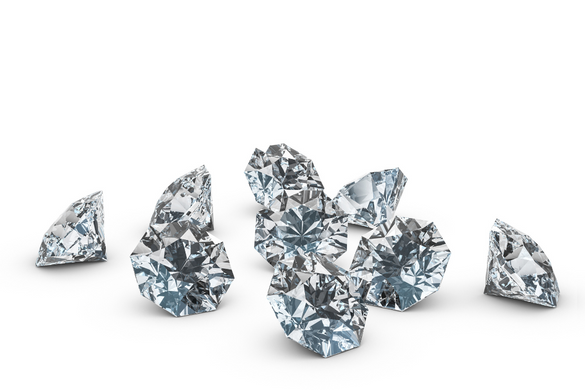Synthetic Diamond Detectors

Synthetic diamonds do not make up a large part of the gem and jewellery industry, but the threat posed by them seriously affects the sanctity of business transactions. In order to counter the ill effects of 'mixing' of synthetics with natural diamonds, several industry bodies have come forward with innovations, here’s a look at a few of them.
A Glimpse Back in Time
Although the first synthetic diamonds were produced in 1953 by a Swedish engineering company Allemanna Svanska Aktiebolaget (ASEA), their work was not announced until after General Electric (GE) declared in 1955 that they had created synthetic diamonds using an apparatus called the ‘belt’.
GE continued improving their technique and in 1970 proclaimed that they had succeeded in growing transparent gem-quality diamond crystals of up to 6 mm average diameter that included not only yellow-brown colours but also near-colourless and boron-doped blue diamonds.
Since then several entities such as Sumitomo of Japan, Russian scientists in Novosibirsk, De Beers Diamond Research Laboratory and more recently several private firms have been successful in creating synthetic diamonds.
Manufacturing
Diamonds can be synthesised in two ways; chemical vapour deposition (CVD) and high pressure high temperature (HPHT). In addition, the HPHT procedure can be used to change or enhance the colour of diamonds.
HPHT produces a diamond by replicating the formation conditions of diamonds deep in the earth by applying a high pressure (HP) and high temperature (HT) to a carbon source. CVD exposes a thin diamond ‘wafer’ or ‘seed’ to high temperature methane. This breaks up atom compounds after which the carbon atoms can ‘precipitate’ and the crystal forms layer by layer. Because of technological problems, CVD diamonds are usually light brown in colour but this can be later rectified by using HPHT treatment.
Detection
The undisclosed mixing of synthetics with natural diamonds, specifically in melee, has been an issue in the trade for the past several years. However, things came to a head in 2012 after a parcel of hundreds of undisclosed synthetics arrived at the International Gemological Institute in Antwerp.
It is almost impossible to detect a synthetic diamond from a natural one using only visual examination. Spectroscopy is generally used to detect ‘growth zones’ in synthetic diamonds and to some extent luminescence under ultraviolet rays to eliminate diamond stimulants.
In 2004, De Beers launched the DiamondSure and DiamondView followed later by the DiamondPlus. DiamondSure is a screening device to determine natural 0.10 to 10-carat diamonds from synthetics and simulants. DiamondView is a desktop-based device designed for stones that have been referred by DiamondSure. DiamondPlus screens for type II HPHT treated natural diamonds and CVD synthetics. WTOCD and HRD Research’s D-Screen distinguishes stones (between 0.20 and 10 carats) that are not synthetic and have not been HPHT colour enhanced from stones that are potentially synthetic or may have had their colour improved by means of HPHT (colour D to J).
Early this year, the Gemological Institute of America (GIA) unveiled the DiamondCheck that can be used to test diamonds from one point to 10 carats. The device uses a Thermo Scientific Fourier transform infrared spectrometer to give one of three results about the inserted stone: natural diamond; diamond requiring further testing as it could be synthetic or treated; non-diamond material such as moissanite or cubic zirconia, though the device does not specify the type of material. The GIA has leased the DiamondCheck to eight bourses worldwide at no cost with a rider that the machines’ data will be transmitted to the GIA, which will use it to broaden its understanding on the type and number of synthetics on the market. However, the device can only screen one stone at a time proving to be an issue for diamond dealers who may need to screen parcels of melee.
This issue has been addressed with De Beers’ launch of the new Automated Melee Screening (AMS) last month – a device that can take up to 500 carats at once. The AMS is a spectrometer-based system that screens round brilliant diamonds from 0.01 – 0.2 carats for potential synthetics and simulants. It automatically feeds, measures and dispenses at a rate of 360 stones per hour and is the result of several years of development, exhaustive testing and production.
With these and other innovative devices, the industry is well equipped and will be able to alleviate market fears about undisclosed synthetics entering the supply pipeline.

